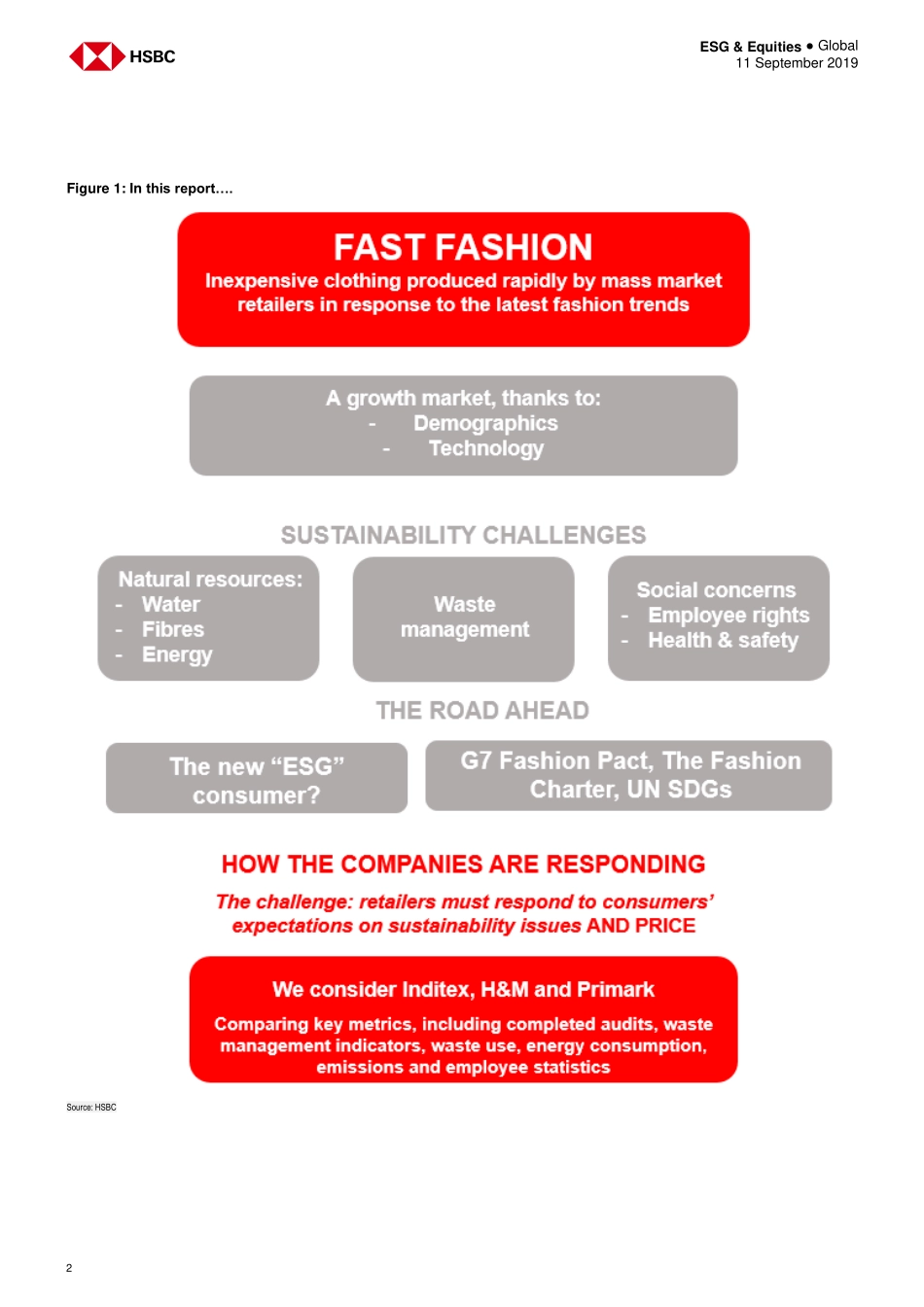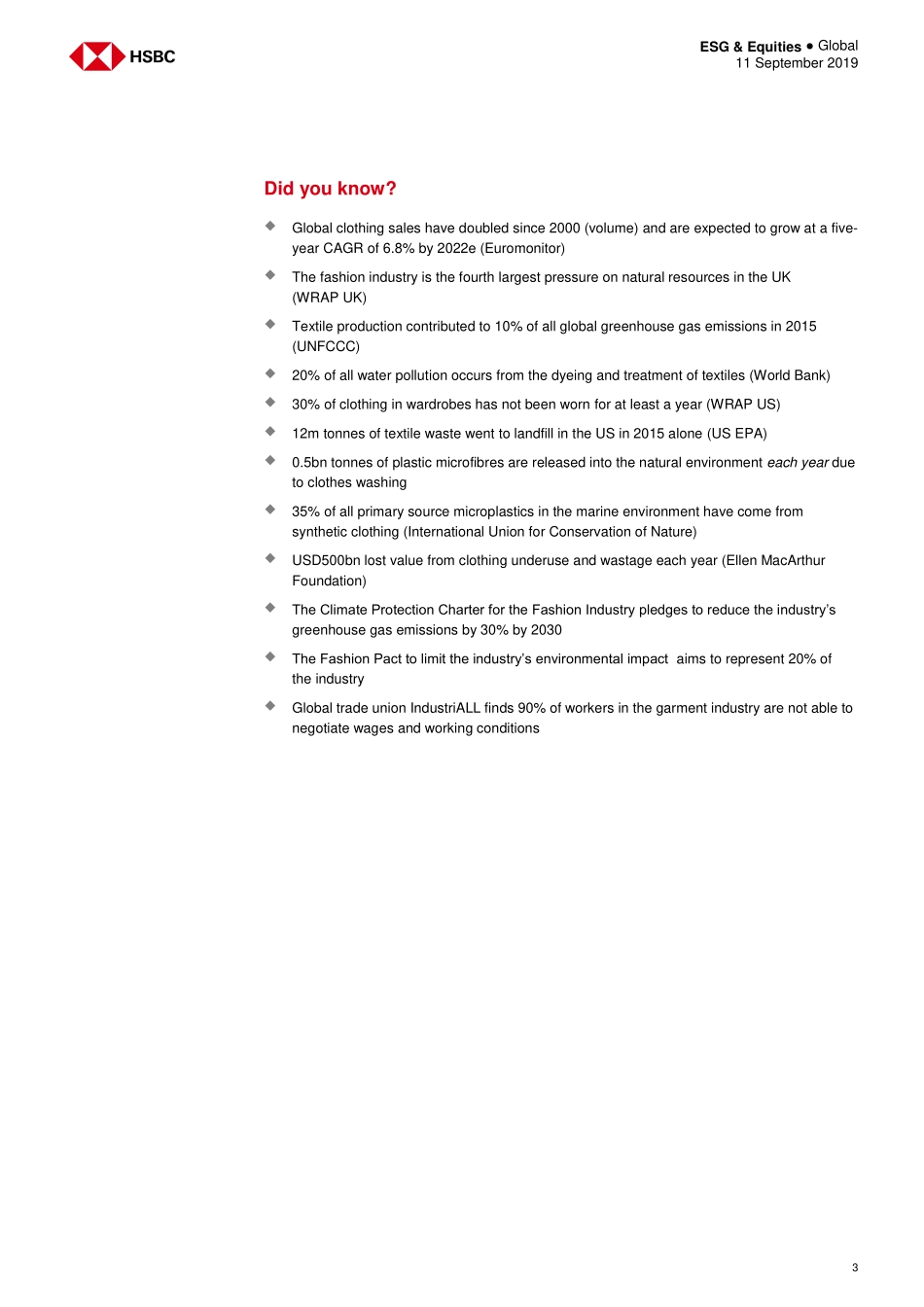Disclosures & Disclaimer This report must be read with the disclosures and the analyst certifications in the Disclosure appendix, and with the Disclaimer, which forms part of it. Issuer of report: HSBC Bank plc View HSBC Global Research at: https://www.research.hsbc.com There is growing pressure for fast fashion to address sustainability issues But there is a contradiction: Gen-Z and Millennials are demanding sustainable fashion (+ive) but also low prices (-ive) We look at global apparel demand and how leading fast fashion retailers are responding to this trend Fast fashion is a growing market thanks to technology and demographics, but there is pressure for a more “sustainable” model. Consumer awareness of the industry’s significant sustainability challenges is growing. This is particularly the case amongst the Gen-Z and Millennial population cohorts, who are displaying a greater willingness to base customer purchase decisions on retailer sustainability credentials (Who cares wins, 25 February 2019). Sustainability issues: The current linear model of producing clothing, wearing and discarding will continue to place increased strain on natural resources, and generate significant emissions and vast amounts of waste (Waste less, grow more: Why the circular economy matters, 11 September 2019). Fast fashion supply chains have been associated with low wages and few employee rights. Health and safety records have, in some cases, also been exposed as being poor, with tragic consequences at the extreme end of the spectrum. The case for sustainability: In the past, incidents relating to sustainability issues have led to tightened regulations and financial penalties. Reputations have been damaged through health and safety, pollution and employee-related incidents. We believe it has never been more important for leading fast fashion retailers to align themselves with consumers’ expectations on ESG, to the benefit of all stakeholders. What about price? However, price remains the key driver of mass-market customer spending decisions currently, including for young generations. It is growth in the younger and typically less affluent Gen-Z and Millennial ‘ESG aware’ population cohorts that is fuelling growth in demand in the fast fashion segment of the global clothing and footwear industry. Global clothing sales have doubled since 2000 (volume terms), and are expected to increase by a further c60% over the next 10 years (Euromonitor). This is underpinned by increased use of online retail and social media via smartphone connectivity, the globalisation of western fashion trends and a growing emerging market (EM) middle-class population. A challenge for retailers: Consuming fewer, better quality items of clothing that last longer may carry better ESG credentials but also a higher price tag. This is not consistent with mass-market consumption trends. Th...


